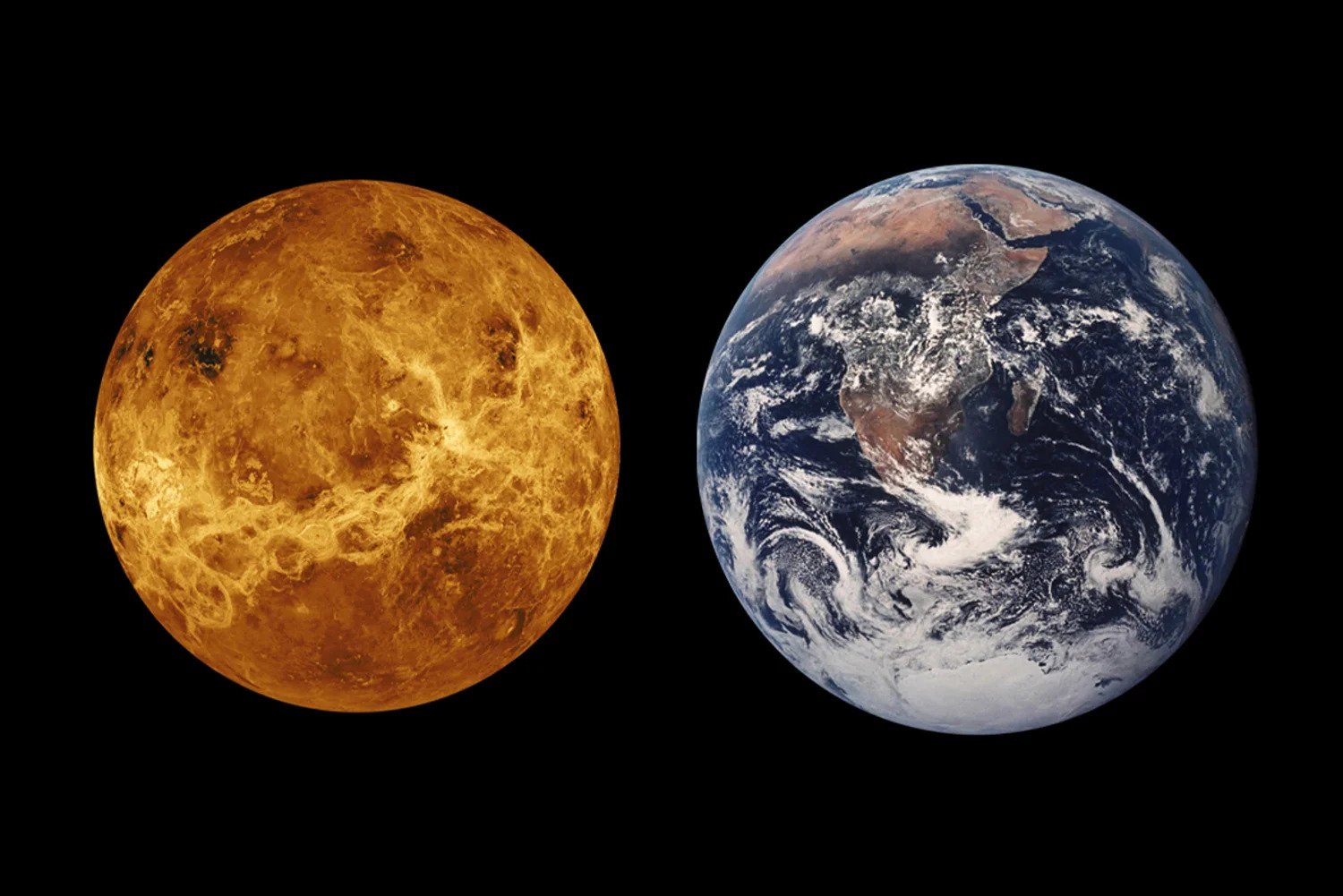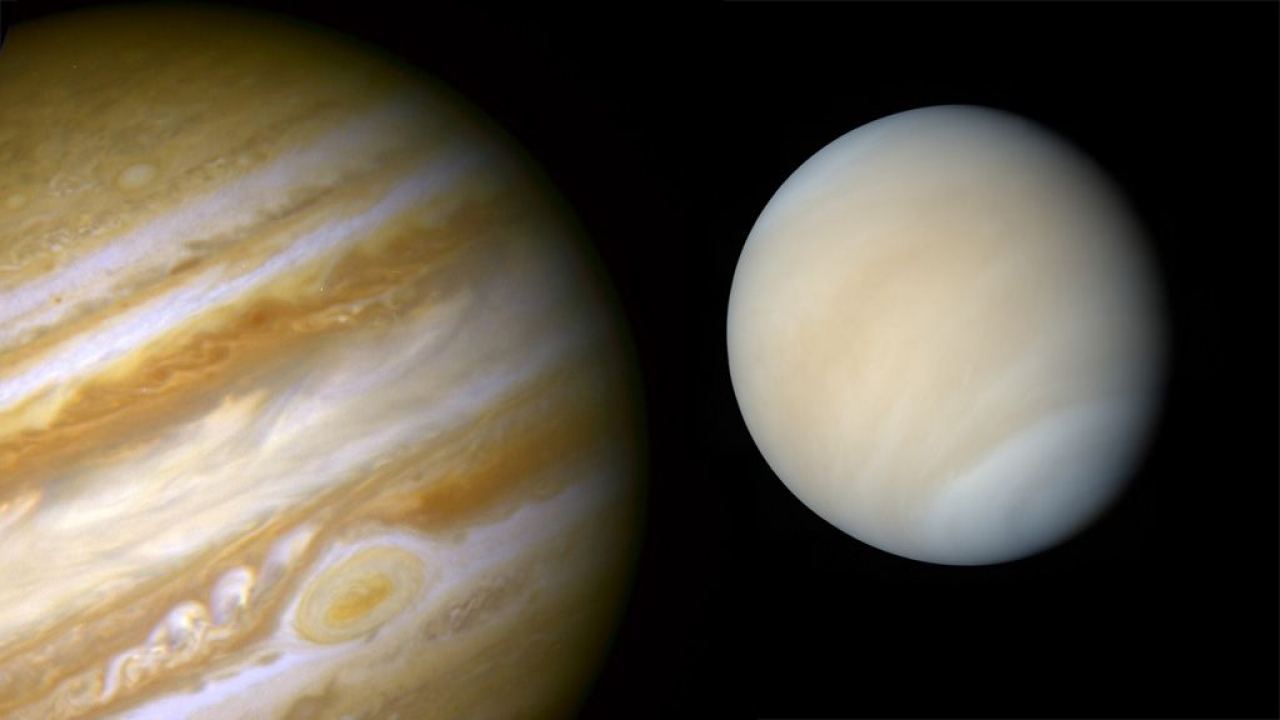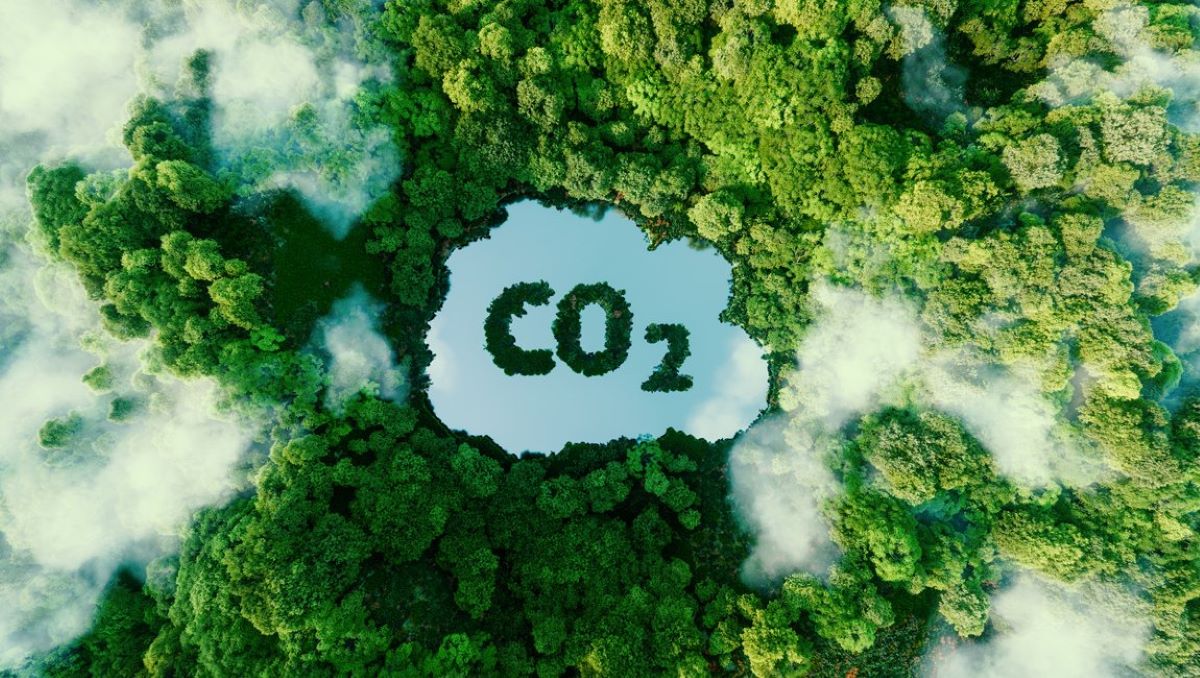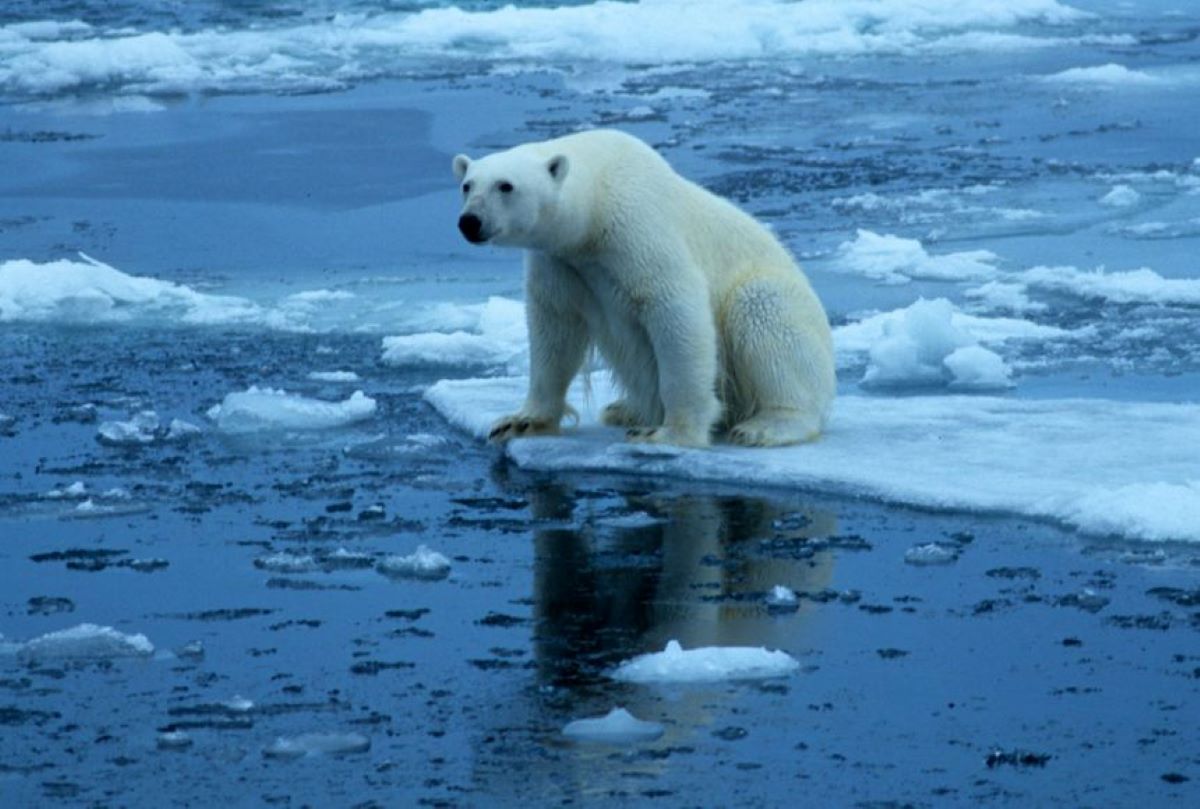Home>Gardening News and Trends>Why Are We Worried About The Greenhouse Effect


Gardening News and Trends
Why Are We Worried About The Greenhouse Effect
Modified: January 22, 2024
Stay up to date with the Latest News on the Greenhouse Effect and find out why it's causing concern. Explore the environmental impact and potential solutions
(Many of the links in this article redirect to a specific reviewed product. Your purchase of these products through affiliate links helps to generate commission for Chicagolandgardening.com, at no extra cost. Learn more)
Table of Contents
Introduction
The Greenhouse Effect is a phenomenon that has gained significant attention and sparked concerns in recent years. As the Earth’s atmosphere absorbs and traps heat radiating from the planet’s surface, it creates a natural greenhouse-like effect. This effect is crucial for sustaining life on Earth, as it helps maintain a stable and habitable climate. However, human activities have intensified the greenhouse effect, leading to alarming environmental consequences.
Understanding the Greenhouse Effect requires a brief overview of how it works. The Earth’s atmosphere consists of gases such as carbon dioxide (CO2), methane (CH4), and water vapor (H2O), known as greenhouse gases (GHGs). These GHGs act as a blanket, trapping heat energy radiating from the Earth’s surface. Without this natural process, the Earth’s temperature would be significantly colder, making it difficult for life to exist.
However, the rapid increase in human activities, such as burning fossil fuels, deforestation, and industrial processes, has significantly elevated the concentration of GHGs in the atmosphere. This excess of GHGs enhances the greenhouse effect, resulting in a phenomenon commonly referred to as global warming.
The consequences of the intensified greenhouse effect are evident in the unprecedented climate changes occurring across the globe. Rising global temperatures, melting ice caps, changing weather patterns, and more frequent and severe extreme weather events are just a few examples of the impacts linked to the greenhouse effect.
These environmental changes have far-reaching effects on ecosystems and human livelihoods. Rising sea levels threaten coastal communities, biodiversity loss disrupts ecosystems, and agriculture is negatively impacted by shifting weather patterns. As these issues continue to escalate, concerns and worries over the greenhouse effect and its implications grow.
It is vital to address the concerns related to the greenhouse effect and take proactive measures to mitigate its impact. By understanding the causes and consequences of the greenhouse effect, we can develop strategies to reduce GHG emissions, promote sustainable practices, and work towards a more resilient and sustainable future.
What is the Greenhouse Effect?
The Greenhouse Effect refers to the process by which certain gases in the Earth’s atmosphere trap heat from the sun, creating a natural warming effect that is essential for supporting life on our planet. This process is similar to how a greenhouse works, hence the name.
The Earth’s atmosphere is composed of various gases, with the primary greenhouse gases being carbon dioxide (CO2), methane (CH4), nitrous oxide (N2O), and water vapor (H2O). These gases are transparent to solar radiation, allowing sunlight to pass through the atmosphere and reach the Earth’s surface. Once the sunlight reaches the surface, it is absorbed and converted into heat. This heat is then radiated back out into the atmosphere.
Here is where the greenhouse effect comes into play. The greenhouse gases in the atmosphere absorb and re-emit the heat energy radiating from the Earth’s surface. These gases act like a protective layer, allowing sunlight to enter and preventing a significant amount of heat from escaping back into space. As a result, the Earth remains warmer than it would be without the presence of greenhouse gases.
Without the greenhouse effect, the average surface temperature of the Earth would be much colder. This natural process is vital for maintaining a suitable climate for supporting life, as it helps regulate the Earth’s temperature within a habitable range.
It’s important to note that the greenhouse effect itself is not a harmful phenomenon. In fact, it is crucial to our existence. However, human activities, particularly the burning of fossil fuels such as coal, oil, and natural gas, have significantly increased the concentration of greenhouse gases in the atmosphere.
This increase in greenhouse gases enhances the greenhouse effect and leads to a phenomenon known as global warming. The excess heat trapped in the atmosphere disrupts the Earth’s climate systems, leading to various environmental and social impacts, such as rising sea levels, extreme weather events, and shifts in ecosystems.
Understanding the greenhouse effect is key to comprehending the causes and consequences of climate change. By recognizing our role in intensifying this natural phenomenon, we can take collective action to reduce greenhouse gas emissions, adopt sustainable practices, and mitigate the impacts of global warming on our planet.
Causes of the Greenhouse Effect
The greenhouse effect is primarily caused by the increase in greenhouse gas (GHG) emissions resulting from human activities. These activities release large amounts of GHGs into the atmosphere, enhancing the natural greenhouse effect and leading to global warming. The main causes of the greenhouse effect include:
- Burning of Fossil Fuels: The combustion of fossil fuels such as coal, oil, and natural gas for energy production is a significant contributor to the greenhouse effect. When these fuels are burned, carbon dioxide (CO2) is released into the atmosphere.
- Deforestation: Forests play a critical role in absorbing CO2 from the atmosphere through photosynthesis. However, deforestation, primarily due to agricultural expansion, logging, and urbanization, leads to the release of large amounts of stored carbon, further contributing to the greenhouse effect.
- Industrial Processes: Certain industrial processes, such as cement production and chemical manufacturing, release GHGs like carbon dioxide, methane, and nitrous oxide. These emissions result from the breakdown of raw materials and the use of fossil fuels in manufacturing and transportation.
- Agricultural Practices: Agricultural activities, particularly livestock production and rice cultivation, generate significant amounts of methane (CH4), a potent greenhouse gas. Livestock emit methane during digestion, while rice production releases methane as a byproduct of anaerobic decomposition in flooded rice fields.
These human-induced causes contribute to the accumulation of greenhouse gases in the atmosphere. Over time, this buildup results in a thicker blanket of GHGs, trapping more heat and amplifying the greenhouse effect.
It’s worth noting that natural processes also contribute to the greenhouse effect. For example, volcanic eruptions release significant amounts of CO2 and other gases, although these emissions are relatively short-lived compared to human-generated emissions.
It’s essential to recognize that while the greenhouse effect is a natural phenomenon, human activities have significantly increased its intensity. By understanding the causes, we can develop and implement strategies to reduce GHG emissions, promote renewable energy sources, improve land-use practices, and adopt sustainable agricultural techniques. These actions are crucial for mitigating the greenhouse effect and minimizing the impacts of global warming.
Environmental Impacts of the Greenhouse Effect
The greenhouse effect, intensified by human activities, has had significant environmental impacts. These impacts go beyond rising global temperatures and extend to various ecosystems and natural processes. Understanding these environmental consequences is crucial for comprehending the urgency of addressing the greenhouse effect. Some of the key environmental impacts include:
- Rising Sea Levels: As the Earth’s temperature increases, the melting of glaciers and ice caps accelerates, leading to rising sea levels. This poses a significant threat to coastal communities, as it increases the risk of coastal erosion, saltwater intrusion into freshwater sources, and increased frequency and severity of coastal flooding.
- Extreme Weather Events: The greenhouse effect contributes to the intensification of extreme weather events, including hurricanes, droughts, heatwaves, and heavy rainfall. These events can result in devastating impacts, such as property damage, loss of life, and disruptions to critical infrastructure and services.
- Ecosystem Disruption: Shifts in temperature and weather patterns disrupt ecosystems and biodiversity. Many species are struggling to adapt to the changing climate, leading to habitat loss, species extinction, and disruptions in ecological interactions and food webs. This loss of biodiversity has far-reaching consequences for the health and functioning of ecosystems.
- Changes in Agriculture: Climate change resulting from the greenhouse effect impacts agricultural systems worldwide. Changing rainfall patterns, temperature extremes, and increased pest and disease pressure affect crop yields and agricultural productivity. These factors can lead to food insecurity, higher food prices, and economic hardships for farmers and communities dependent on agriculture.
- Ocean Acidification: The increasing levels of carbon dioxide in the atmosphere can also contribute to ocean acidification. When CO2 is absorbed by seawater, it reacts with water to form carbonic acid, which lowers the pH of the ocean. This acidification can harm marine life, particularly organisms that rely on calcium carbonate to build shells or skeletons, such as corals, shellfish, and some planktonic species.
These environmental impacts of the greenhouse effect are interconnected and have cascading effects on Earth’s systems. The loss of ecosystems, disruptions in agriculture, and rising sea levels not only affect the natural world but also have severe social and economic consequences for human societies.
To address these environmental impacts, it is crucial to reduce greenhouse gas emissions, transition to renewable energy sources, promote sustainable land-use practices, and invest in climate adaptation and resilience measures. By taking decisive action, we can strive to mitigate the environmental consequences of the greenhouse effect and protect the health and integrity of our planet.
Effects of the Greenhouse Effect on Climate Change
The greenhouse effect plays a significant role in driving climate change, with numerous effects that have far-reaching impacts on our planet. The intensification of the greenhouse effect has led to various changes in climate patterns, causing both immediate and long-term consequences. Understanding these effects is vital for grasping the urgency of addressing climate change. Some key effects of the greenhouse effect on climate change include:
- Rising Temperatures: Increased greenhouse gas emissions contribute to rising global temperatures, resulting in higher average temperatures worldwide. This increase affects both land and ocean temperatures, causing shifts in weather patterns, heatwaves, and more frequent and intense extreme temperature events.
- Changes in Precipitation: Climate change resulting from the greenhouse effect alters precipitation patterns, leading to changes in rainfall distribution and intensity. Some regions may experience increased rainfall and flood events, while others may suffer from droughts and water scarcity. These changes in precipitation patterns have profound implications for water resources, agriculture, and ecosystems.
- Melting Ice Caps and Glaciers: The greenhouse effect contributes to the accelerated melting of ice caps and glaciers around the world. This results in the loss of freshwater storage, rising sea levels, and amplifying the risk of flooding in coastal regions. The melting ice also impacts ecosystems that rely on freshwater sources, such as polar habitats and mountainous regions.
- Ocean Warming and Acidification: The increased absorption of heat by the oceans due to climate change leads to warmer ocean temperatures. This warming affects marine ecosystems, coral reefs, and species distribution. Additionally, as the concentration of carbon dioxide in the atmosphere rises, it is absorbed by the oceans, leading to increased ocean acidification, which adversely affects marine life.
- Altered Ecosystems: Climate change disrupts ecosystems by affecting the timing of seasonal events, such as flowering, migration, and hibernation. Many plant and animal species struggle to adapt to these changes, leading to shifts in species distributions and potential extinctions. This disruption can have severe consequences for biodiversity, ecosystem services, and the relationships between species.
These effects of the greenhouse effect on climate change interact and compound each other, exacerbating the challenges faced by ecosystems, communities, and economies worldwide. They represent an urgent call to action to reduce greenhouse gas emissions, transition to renewable energy sources, promote sustainable practices, and adapt to the changing climate. By addressing the greenhouse effect and its effects on climate change, we can strive to build a more resilient and sustainable future for generations to come.
Concerns and Worries about the Greenhouse Effect
The greenhouse effect and its associated impacts have raised significant concerns and worries among scientists, policymakers, and the general public. These concerns stem from the recognition of the potential risks and consequences that arise from the intensification of the greenhouse effect. Understanding the gravity of these concerns is crucial for driving meaningful action. Some of the key concerns and worries about the greenhouse effect include:
- Climate Disruption: The greenhouse effect is responsible for disrupting climate patterns worldwide. This disruption leads to extreme weather events, changing rainfall patterns, and rising global temperatures. These climate disruptions pose risks to human lives, ecosystems, agriculture, and infrastructure, exacerbating vulnerabilities and challenges faced by communities.
- Rising Sea Levels: The melting of ice caps and glaciers, driven by the greenhouse effect, contributes to rising sea levels. This phenomenon poses a significant threat to coastal areas and low-lying islands. Communities living in these areas face increased risks of flooding, coastal erosion, and saltwater intrusion, which can lead to the displacement of populations and loss of valuable habitats.
- Impacts on Biodiversity: Climate change resulting from the greenhouse effect has profound implications for biodiversity. Species extinction rates are accelerating as ecosystems struggle to adapt to changing temperature and precipitation patterns. This loss of biodiversity disrupts ecosystems, reduces ecosystem resilience, and compromises important ecological services upon which human populations rely.
- Food and Water Security: The greenhouse effect affects agriculture and water resources, leading to concerns about food and water security. Changes in rainfall patterns and increased frequency of extreme weather events can result in crop failures, reduced agricultural productivity, and water scarcity. These challenges can lead to increased food prices, food insecurity, and conflicts over resources.
- Social and Economic Impact: The consequences of the greenhouse effect extend beyond the environmental realm and impact societies and economies globally. Disruptions in agriculture, increased frequency of natural disasters, and the need to adapt to a changing climate all impose substantial social and economic costs. These impacts disproportionately affect vulnerable populations and exacerbate existing inequalities.
These concerns and worries about the greenhouse effect are driving calls for urgent action to mitigate greenhouse gas emissions and adapt to the changing climate. Governments, organizations, and individuals are recognizing the need to transition to renewable energy sources, implement sustainable practices, and support climate resilience initiatives. By addressing these concerns head-on, we can work towards a more sustainable and resilient future, minimizing the risks and consequences associated with the greenhouse effect.
Mitigation and Solutions for the Greenhouse Effect
The greenhouse effect and its potential impacts on our planet call for urgent mitigation measures and solutions. Addressing the greenhouse effect requires a multi-faceted approach that encompasses efforts to reduce greenhouse gas emissions, promote sustainable practices, and enhance climate resilience. Here are some key mitigation strategies and solutions for the greenhouse effect:
- Transition to Renewable Energy: One of the most effective ways to mitigate the greenhouse effect is to transition away from fossil fuels and increase the use of renewable energy sources like solar, wind, and hydropower. This shift to clean energy helps reduce carbon dioxide emissions and lowers dependence on non-renewable resources.
- Improve Energy Efficiency: Enhancing energy efficiency in all sectors, from residential and commercial buildings to industrial processes and transportation, is critical. Energy-efficient technologies, practices, and policies can significantly reduce greenhouse gas emissions by minimizing energy waste and promoting sustainable consumption patterns.
- Sustainable Land Use and Forest Conservation: Protecting and restoring forests, as well as adopting sustainable land-use practices, can help mitigate the greenhouse effect. Forests act as carbon sinks by absorbing carbon dioxide from the atmosphere. Conserving and restoring forests can help sequester carbon and preserve valuable ecosystems.
- Promote Sustainable Agriculture: Implementing sustainable agricultural practices can reduce greenhouse gas emissions from the sector. These practices include precision farming, agroforestry, organic farming, and using climate-resilient crop varieties. Additionally, reducing food waste and changing dietary habits towards more plant-based diets can have a significant impact on lowering emissions.
- Invest in Research and Development: Continued investment in research and development is crucial for advancing clean technologies and finding innovative solutions to mitigate the greenhouse effect. This includes supporting research on climate modeling, sustainable energy systems, carbon capture and storage, and climate adaptation measures.
- Build Climate Resilience: Enhancing climate resilience is essential to cope with the impacts of the greenhouse effect. This involves implementing measures such as improving infrastructure resilience, developing early warning systems for extreme weather events, and supporting vulnerable communities in adapting to climate change.
It is important to remember that individual actions also play a significant role in mitigating the greenhouse effect. Choosing sustainable transportation options, reducing personal energy consumption, and adopting environmentally-friendly practices in daily life contribute to the collective effort in combating climate change.
Addressing the greenhouse effect requires collaborative efforts at all levels – from individuals and communities to governments and international organizations. By implementing these mitigation strategies and solutions, we can work towards mitigating greenhouse gas emissions, minimizing the impacts of the greenhouse effect, and creating a more sustainable and resilient future.
Conclusion
The greenhouse effect, a natural phenomenon critical for sustaining life on Earth, has become a cause for concern due to human-induced activities that have intensified its impact. The rise in greenhouse gas emissions from burning fossil fuels, deforestation, and industrial processes has amplified the greenhouse effect, leading to climate change and environmental disruptions.
Understanding the greenhouse effect and its consequences is crucial for fostering awareness, driving action, and finding solutions. Rising global temperatures, altered precipitation patterns, melting ice caps, ecosystem disruptions, and concerns about food and water security exemplify the urgent need to address the greenhouse effect.
Mitigation and solutions for the greenhouse effect involve transitioning to renewable energy sources, improving energy efficiency, adopting sustainable land-use practices, promoting sustainable agriculture, investing in research and development, and building climate resilience. These actions require global collaboration, with individuals, governments, and organizations working together to reduce greenhouse gas emissions and mitigate the impacts of the greenhouse effect.
We are at a critical juncture in our relationship with the environment. By taking decisive measures to address the greenhouse effect, we have an opportunity to shape a more sustainable and resilient future. By transitioning to clean energy, implementing sustainable practices, and supporting climate resilience initiatives, we can minimize the risks associated with the greenhouse effect and preserve the health and integrity of our planet for generations to come.





